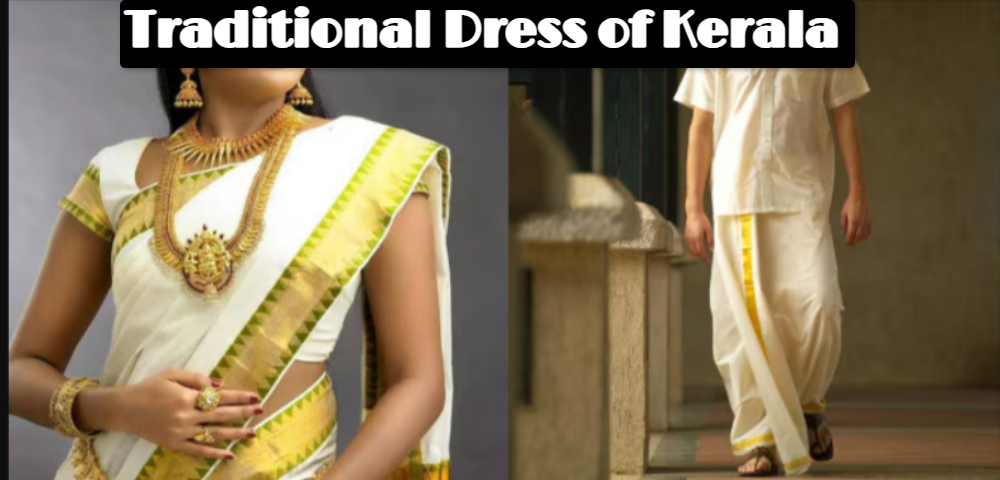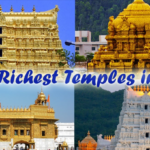Kerala is famous for its beautiful greenery, the rich culture and of course the people. It is all part of keeping the tradition of Kerala alive and that’s the primary reason why people choose who visit the state. One of the first things you’ll notice while traveling to Kerala is the dress or attire that people wear down there. Today, we’re going to take an in-depth look at it because this article is about the traditional attire of Kerala for both genders. Let’s go right now.
Traditional Dress for Men in Kerala
1. Mundu
Mundu Mundu is a crucial element of traditional clothing for men in Kerala. It’s a long, usually cream or white in color and wrapped from waist up to your ankles. This basic item of clothing is significant in Kerala’s society. It represents authenticity and the traditional ways of life. The unique edge on the Mundu is known as “Kara” and typically has a golden hue. Sometimes it happens that the Kara is a different hue particularly when it is worn during certain occasions or for celebrations. For men who prefer formal attire it provides their elegant look when they wear the Mundu with an embroidered or traditional shirt.
It is worn casually on the waist, and extends from the waist downwards. It is able to be folded to just below the knees during an unwinding day, or when doing exercises to make moving more comfortable. It’s this kind of flexibility that has made the mundu a hit not only for its cultural significance but also due to its utility in the hot, humid conditions of Kerala.
2. Jubba
The Jubba is an additional element of traditional attire for males in Kerala. It’s akin to an old-fashioned shirt, and is typically constructed from silk. It is worn by men as a dress. In some cases the Jubba is adorned with an Kara that can be decorated with dazzling, vibrant stones. However that this bright and colorful Jubba is usually worn during major events such as marriage or any other religious celebration which is another way to display the rich and sophisticated design of Kerala.
Traditional Dress for Women in Kerala
1. Mundum-Neriyathum
The traditional dress worn by women from Kerala Mundum-Neriyathum is a gorgeous two-piece ensemble like an traditional saree. The top piece is referred to as Neriyathum and is worn from the waist and placed over the upper portion of the fabric that covers the blouse. It is worn across the shoulder of one’s left, just as the pallu or pallav does when you finish the dress. The majority of these pieces are either cream or white, with edges of gold. This style complements the classic and sleek look of traditional clothing for men It’s a great match.
Although, the Mundum-Neriyathum can be more of a common garment. It is essential to all the celebrations that take throughout Kerala whether it is for weddings or festivals. The fabric also varies in the same way as cotton every day use because it’s in a warmer environment, whereas silk is, for instance, utilized for special occasions and occasions because of its an attractive look and elegant patterns.
2. Kerala Saree aka Set Mundu
It is the Kerala Saree, also known as Set Mundu is an additional important traditional dress. It is a lot like the Mundum-Neriyathum but to give it the look of a saree, it is worn in a different manner. It is a highly popular dress for the grand celebrations that are Onam and Vishu as well as wedding celebrations. It is renowned for its opulence and reflects the pride of culture in the state.
Accessories and Jewelry
Accessories and jewelry are essential to finish off the look of traditional. One of the most popular within Kerala is the temple jewelry that is made up of the elements of necklaces and earrings frequently depicting gods or subjects from nature, crafted from gold. Women dress them up on special occasions, and make their traditional attire even more stunning to behold. The accessories for men are less formal and include the gold-bordered towels carried over the shoulder. known as Melmundu. It is worn to formal events.
Conclusion
It’s over for right now. If you’d like to feel truly connected to the land in Kerala and its people and traditions, then you should try the traditional attire and discover why locals love wearing the traditional attire on a daily basis.


